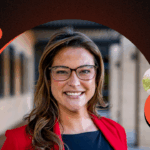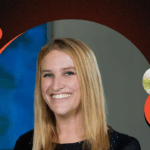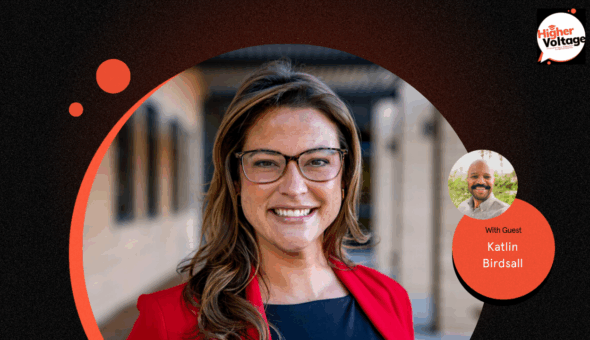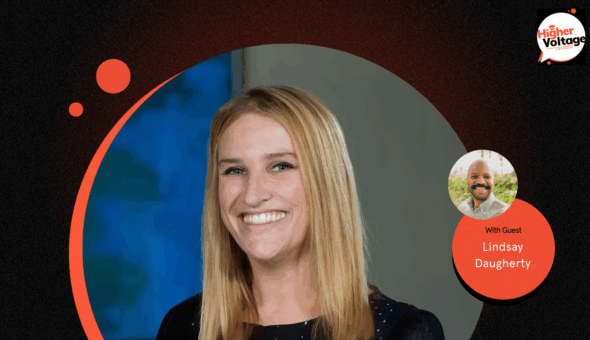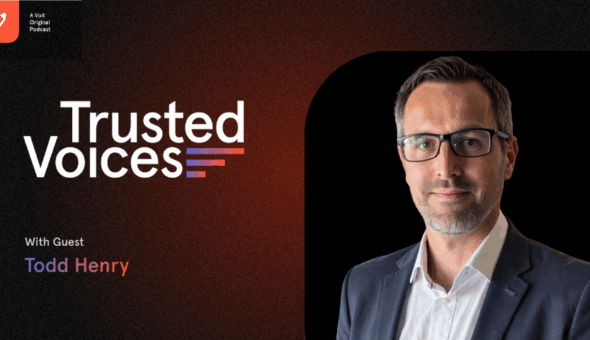The Supreme Court is weeks away from handing down a decision that will impact the future of affirmative action in higher education, with many court observers speculating the conservative-leaning court will rule that colleges can no longer consider race a factor when admitting students.
Natasha Warikoo, the Lenore Stern Professor in the Social Sciences Department of Sociology at Tufts University, joins Higher Voltage host Kevin Tyler to discuss the potential implications of such a ruling.
Show notes:
- What you need to know about affirmative action at the Supreme Court – ACLU
- Supreme Court Affirmative Action Cases Could Bring End to Race-Conscious Admissions – Teen Vogue
Recorded on Thursday, March 16, 2023.
Read the full transcript:
Kevin Tyler:
Higher Voltage is brought to you by eCity Interactive. For over 20 years, eCity Interactive has created websites and digital marketing strategies and solutions for colleges and universities that deliver results and exceed expectations. Their latest offerings to higher ed clients include enrollment funnel diagnostics and enrollment support services that efficiently attract and engage potential applicants with results you have to see for yourself. To learn more, visit ecityinteractive.com.
Hello and welcome to Higher Voltage, a podcast about higher education that explores what’s working, what’s not, and what needs to change in higher ed marketing and administration. I’m your host, Kevin Tyler.
Welcome back to Higher Voltage. I am Kevin Tyler, joined today by Natasha Warikoo. Natasha is the Stern professor in the Humanities and Social Sciences Department of Sociology at Tufts University, a former Guggenheim fellow and high school teacher. She’s written four books: Race at the Top: Asian Americans and Whites in Pursuit of the American Dream in Suburban Schools; Is Affirmative Action Fair? The Myth of Equity in College Admissions; The Diversity Bargain: And Other Dilemmas of Race, Admissions, and Meritocracy at Elite Universities; and Balancing Acts: Youth Culture in the Global City, her first book. I’m so pleased to have Natasha join us today to talk about the conversation that the higher ed industry is having right now around affirmative action. The decisions that the Supreme Court is set to make in June of this year, following arguments made in October of last year and everything in between. So Natasha, welcome to Higher Voltage. I’m so pleased to have you join us.
Natasha Warikoo:
It’s great to be here. Thanks for having me.
Kevin Tyler:
So before we dive into conversation, and I would just like for you to mention any other parts of your trajectory to this place you are now that brings us to our conversation today. Are there other pieces you’d like to share with our audience about yourself or your background [inaudible 00:01:58] I didn’t mention in the opening?
Natasha Warikoo:
No, I think you summed it up. I came to these questions of admissions and fairness and meritocracy really out of my broader interest in educational equity. And about 10 years ago, I really started thinking about inequality, not just in terms of disadvantage but in terms of advantage, because without advantage there’s no disadvantage. And how do people who are advantaged by systems of education make sense of that and how do they square… an understanding that I think most people have, that we have unequal opportunities to get into the top colleges on the one hand, and on the other hand, a feeling of accomplishment when you do get into one of these colleges and how do they make sense of that?
And I thought that that would kind of tell us a little bit about how elites kind of justify their position and promote policies that continue to perpetuate inequality. And so that’s kind of how I came to these questions. And now obviously, these questions are now on the US Supreme Court unfortunately, but I come at it from an interest in educational equity, meritocracy, and these ideas about what’s fair and who deserves to be at the top.
Kevin Tyler:
Excellent. The conversation around affirmative action is a gigantic one, one that has a lot of threads, a lot of detail, and a lot of history. And I’m wondering if for our listeners to just set the stage, if we could just describe what happened and what is at stake in the Supreme Court decision that is coming in June?
Natasha Warikoo:
Sure. So I’ll take it back for the benefit of people who are less familiar with the history, affirmative action started in higher education in the 1960s. So this was around the time of the Civil Rights Movement. It started in the early ’60s at a few colleges admitting very small numbers of African-American students with the recognition that they historically had basically excluded African Americans. Now of course, some of these northern colleges always had one or two Black students in the past, but they were really the exception that proved the rule because of the way that students were admitted and what it took. And so they really wanted to be seen at the kind of vanguard of racial justice some of these colleges. And so they started having these programs. And over the 1960s, the programs grew both in terms of how many students they were admitting and also in terms of how many colleges were now practicing affirmative action.
And so this is sort of part of the Civil Rights Movement and this push for educational equity. And pretty soon by the late 1970s, there is a major lawsuit that comes to the US Supreme Court. Now, I don’t want the irony of these lawsuits to be lost on anyone that these laws that are designed to protect African Americans from racial discrimination in the face of slavery, the 14th Amendment and residential segregation, legal exclusion, the Civil Rights Act, these laws are now used to say, “Hey, there’s discrimination towards whites.” And I’ll talk in a second about Asian Americans. In 1978, the Bakke case that made to the US Supreme Court, Allan Bakke basically said that he experienced racial discrimination in his application to medical school because he was applying to a place that had these quotas for underrepresented groups.
And so in that decision, that was a split decision where some justices bought the racial equity argument, others did not. And Justice Powell was the kind of balancing vote. And he said, you can have affirmative action, but you can’t do it in a mechanistic way. That is, you can’t have a quota. So the university program was ruled against, but it opened the door to affirmative action that is done in a holistic way. He pointed to Harvard admissions, he said, well Harvard, they don’t just give you a certain number of points or reserve a number of seats, but they look at you holistically, what grades did you have? Where did you go to school? What is your racial background? All of these things combined. So that sort of opened the door to this kind of justification of affirmative action. Fast-forward, another case makes it to the US Supreme Court in 2003, actually two cases, the Grutter and the Gratz cases at University of Michigan, the court again upholds the right for colleges to practice affirmative action in a holistic manner.
Again, you can’t do it through fixed number of points, but you can do it holistically. 2015, there’s another case that goes to the US Supreme Court, Fisher versus Texas, where Abigail Fisher, a young white woman, was recruited by her father’s friend, Edward Bloom, to say that she experienced racial discrimination in admissions to University of Texas. She again lost that case and Edward Blum, I think it’s important to understand the role that he plays and the role of very well financed, conservative and libertarian organizations in pushing these lawsuits. So Edward Blum kind of bankrolled that case, lost that case and said, you know what? I’m going to turn to Asian Americans. And they had this idea that, well, if I use a racial minority group, then I will be able to make a stronger case that there is racial discrimination because we’re used to thinking about racial discrimination as towards racial minorities rather than towards whites.
And I think he also barred from this model minority idea about Asian Americans, this idea that, well, if Asian Americans are doing well academically, then there must be no longer any racial discrimination or any reason besides their own faults that African Americans, that Latinx, that Native Americans aren’t getting into these colleges without affirmative action at the same numbers. And of course that’s incredibly problematic. And Asian American achievement is tied to streams of migration and US immigration policy. I won’t go into that, but the point is that, so in this new case, which was heard in October and is going to be decided this spring, there are, again, two cases, one at Harvard where the plaintiffs are Asian American groups saying that they experience racial discrimination in admissions and the remedy that they seek or that Blum seeks on their behalf is the end of affirmative action.
So it’s kind of this weird twist of this group experiences discrimination so this group should not have kind of a special consideration. And there’s also a case at UNC and that is a more traditional case with white plaintiffs. And of course, the difference in this case is that the US Supreme Court looks very different and is much more conservative than it was even in 2015 and has got progressively more conservative. So many are thinking about, well, what’s next for college admissions in the wake of this decision depending on what happens.
Kevin Tyler:
So that leads right into my next question. I think that was a really great synopsis of what brought us to where we are today. What are some of the possible outcomes here and what are some of the consequences associated with those outcomes, do you think?
Natasha Warikoo:
Yeah, so I think this is not going to be a thumbs up or thumbs down decision. I think that’s important to keep in mind that it’s not a yes or no, really the proof is kind of in the pudding. And so even in these previous decisions, for example in the Fisher case in 2015, it affirmed affirmative action on the one hand, but the justices also said, we’re no longer going to just take on good faith that these colleges have tried other race neutral alternatives and haven’t been able to find any. You have to be able to prove that to us in court. So that was a slight narrowing in that case as well. So there’s all these nuances. I think there will be some kind of narrowing. What might happen, perhaps the most likely scenario is that they will say you can no longer have a checkbox… you know how in forms you often have a checkbox, check your race.
So it can’t be that, but you will still be able to talk about your culture or your experiences of discrimination or how race has shaped who you are as a person. So it’s not that it has to be a kind of quote-unquote, “colorblind” admissions process. Now there is a possibility that they will say the admissions officers can’t know your race. That to me is kind of problematic and it almost feels like how is that even possible. For many people, if the admissions officer is told what high school they go to, it’s likely that they’ll know what race they are or their name will signal a particular ethnicity or race or all of these kinds of markers, family history, the personal essay. So I think that’s an unlikely scenario. I don’t think it’s off the table given who who’s on the Supreme Court. But Justice Ketanji Brown Jackson asked about this question in the hearings and even the plaintiff’s lawyers were saying that they thought it would be fine to talk about your cultural background or experiences of discrimination in the application.
So the consequences, I think it’s going to have a major impact. I will say that we should also keep in mind that even these previous decisions already have an impact. So there was a study that came out a few years ago, looking at how many colleges practice affirmative action, that number, particularly below the most elite colleges, they’re already kind of pulling back from affirmative action. And I think that’s because they’re worried about lawsuits. These lawsuits are incredibly expensive. Not a lot of media that these colleges want. If you’re not one of the top colleges with huge endowments, you can’t afford a lengthy and expensive lawsuit. So we already have seen a kind of pulling back. There’s a kind of chilling effect, that has already started. I think that will continue regardless… any kind of narrowing is going to continue that chilling effect and being able to consider race in admissions.
We know from what happened in other states, the nine states already ban affirmative action in college admissions. They’re either through state referenda or legislative action. California has not considered race since 1998, almost 25 years. And the studies are not good. They find that there is a dramatic decline in the number of Black and Latinx students on those colleges. It starts to creep up a little bit after a few years when the colleges sometimes they retool, they have a diversity essay, they do a lot more recruitment in more diverse neighborhoods. And so they do try to compensate but none of these states have been able to get back to their pre ban levels of representation. Medical schools, there was a study of eight states with bans on who goes to medical school. We see a 5% decline in enrollment of Black and Latinx medical students. And we know the research on medical care, which suggests that who your doctor is and race matters a lot literally to people’s health. And we already have unequal access to healthcare in this country. So that will literally affect people’s healthcare.
In California, a study of applicants before and after the ban shows that students who went to the UC system, after the ban Black and Latinx students were going to lower status colleges than they would have with affirmative action. And because of that, they had lower graduation rates. So this idea that going to a higher state’s college makes it harder for you, is actually wrong. You’re more likely to graduate at those places, and because those places have higher graduation rates and more resources, so lower graduation rates and then even a study of wages of Latinx workers finds a 5% decline related to the end of affirmative action.
So again, for these states, there’s a little bit of a spillover. So let’s say you apply to college in California, you are from California, you might then apply in the next state over or even Massachusetts where we still practice affirmative action, you won’t be able to do that if it ends in the entire country. So I don’t want to minimize the impact that it’s going to have. I think colleges will do their best to pivot because I think most admissions offices and most colleges really want that diversity and see a value both in terms of the educational experiences, equity and justice for affirmative action.
Kevin Tyler:
I appreciate you sharing that information. I think it’s very helpful to understand the context of the outcomes and what those consequences are. I have to say that that day in October, I was completely glued to the arguments during that hearing. I was fascinated by the entire conversation for a lot of reasons, but particularly there were some really compelling pieces around legacy admits, some questions around the definition of diversity, et cetera. I’m curious how you might characterize the quality of the arguments made in this hearing. What were the most important points raised and what were the judge’s most notable reactions?
Natasha Warikoo:
Yeah, it was fascinating to me too. And I will say, I’m not trained as a lawyer and so this is the first time I actually listened to the entire hearing of a case-
Kevin Tyler:
[inaudible 00:14:47].
Natasha Warikoo:
… live, that it was happening. So in some ways I don’t have anything to compare it to. So let me just start with that caveat. But I think what I found fascinating was just the kinds of questions. So for example, Clarence Thomas really… in some ways not giving the benefit of the doubt to these universities saying, “Well, I don’t even know what diversity is.” And part of me was really? Yes, you do. Come on. And just these really, really back to basic fundamental questions, that I thought as a country we had sort of gone beyond, were coming up. Alito as well, these questions of discrimination. And even Roberts who now looks more moderate than he is to, [inaudible 00:15:30] this idea that this is discrimination.
And the question of legacy is an interesting one and of class because the reality is that, again, race is a suspect class in the eyes of the law, which it should be because of our history. But it means that whites can sue and say that they’re experiencing racial discrimination vis-a-vis African Americans. And that is taken up in court, but colleges are allowed to discriminate on the basis of legacy. Did your parents go to this college? Which I think most Americans would say that’s not really fair. Or your class, they’re allowed to say, we’re not need-blind. We can’t afford to be need-blind. So if you’re a [inaudible 00:16:14] paying student, you have a leg up over someone who needs financial aid. They’re allowed to do that. They’re allowed to do these things that clearly benefit people who are advantage and who benefit? Whites, by the way, because the vast majority of legacy admits are white, social class that affects whites more than every other racial group.
Things like we want someone from every state in the country, well, who lives in the middle of the country? It’s mostly whites. So all of these things they’re allowed to do, and again, these benefit whites, but they’re questioning the legal- because of a law designed to protect African Americans in particular. And Ketanji Brown Jackson, again, I know I mentioned her earlier, but I really was taken by her just incisive comments. And it was amazing because this is one of her first cases and just so on point, and she kind of brought this up when she said to the plaintiff, “You’re telling me that if a young man who is…” I don’t remember what, fifth generation from North Carolina, says, “Five generations of men, because women could not go to this college a few generations ago, have gone to UNC and I want to honor that legacy by going to UNC.” That is permissible.
But now a young African-American man also who is from North Carolina who said, “My family has been in this state for six generations. My ancestors were not allowed to go to this university and I want to honor their legacy by studying it at UNC,” that the former would be allowed, but the latter would not. And the lawyer, he didn’t say no, he basically agreed with that. And to me that was so incisive to show that legacy admissions in these contexts are racial. It is a form of racial discrimination, but this small policy that is designed to try to make up for all of these other things is under attack. And Elena Kagan as well, she had that phrase, what did she say when they were talking about, well, you can’t have a box, but you can talk about your race and it’s okay, you can talk about your culture, [inaudible 00:18:26] you’ve experienced race-
And she was like, what? What did she say? You’re slicing the bologna really thin. And I thought that was kind of a funny kind of comment. So all that talk of legacy admissions was like, I don’t know why they were bringing it up because that was not on the table. And it’s not like it’s either or, right? And that’s what I would say this argument of, well, it should be about class, it should not be about race, and they should end legacy admissions. And that may all be true, but that’s a separate issue. And I agree we should have a lot more class-based considerations, and these colleges should not be as elite as they are in terms of the incomes of the families who are sending their students to the colleges, but we also need racial diversity. So this false dichotomies, I think was a theme that I feel like I heard a lot.
Kevin Tyler:
I was truly moved by that piece from Justice Ketanji Brown Jackson because it was such a thoughtfully framed argument for why we operate the way that we do and why this suggestion or proposal could have impacts that are unintended or maybe intended, who knows? And I thought that was a really beautifully stated way to ask that question.
Natasha Warikoo:
Yeah.
Kevin Tyler:
I can’t help but think about all the other things happening around higher education, especially when it comes to DEI, the things happening in Florida, Iowa, South Dakota, some of these other states, and the timing of the Supreme Court decision and the arguments, the points raised therein and everything else. And what role would you say the politicization of higher ed and the Supreme Court plays or could play in this decision, just in your own opinion?
Natasha Warikoo:
Yeah, I think this is related. I think the attacks on higher education, Florida is the most extreme case, but it is certainly not the only place where this is happening. It’s really scary. It’s like back to the 1950s with whole disciplines, ways of thinking kind of being erased. I think you just have to follow the money and where is the money coming from? For this case, for the Fisher v. Texas case for these attacks in all of these different places on curriculum and African American studies, I think you find there is a very well organized and well-oiled, conservative and libertarian movement that is funding these efforts. It’s interesting because in some ways, I think this group feels like they already have affirmative action in the bag bag, and they are also now attacking admissions to some of these elite public schools like Boston Latin in Boston, and all over the country.
And they’re saying, Thomas Jefferson in Virginia, for places that have changed, they’re saying, okay, you changed your admissions policy and it’s race neutral, but that change was because you wanted to diversify and that is racial discrimination. So they’re even attacking race neutral policies now. And again, this is the Pacific Legal Foundation, it’s almost like they’re like, okay, now we have affirmative action. Now we’re going to attack things even that are race neutral. So they are very well organized and it is very disturbing. The small gains that we’ve made since the 1960s are being pushed back. And now I’ll point out, just in case people don’t know that Edward Blum, before he turned to affirmative action, he was behind the gutting of the Voting Rights Act. So the Voting Rights Act, again, was designed to protect the right to vote for African Americans in the 1960s, basically said that any change to voter laws in a state had to go through, get pre-clearance from the federal government because of this history.
And he bankrolled this Shelby v. Holder, this case that went to the US Supreme Court, and he won to say that we don’t need that anymore because now, states are not… there’s no evidence of discrimination, you don’t have to get pre-clearance anymore. Literally, the next day these states started changing some of these laws, and we’ve seen that in the last few years, attempts to restrict access to early voting, to same day voter registration, to literally ballot boxes. It’s almost like the right is forget trying to convince you to join our side, now we’re just going to try to not let you vote. It’s a real threat, to me it’s a threat to democracy this movement
Kevin Tyler:
We’re seeing in states, Ohio just announced a bill that would take over school curriculum there. Dallas, Texas education just is attempting or has taken over school management in the city of Dallas. There are these other attempts that feel very coordinated, as you mentioned around education and it feels like all levels of education, K-12 and after are all on the table for some sort of revolution. And higher ed being at the back end of that educational experience is really going to pay the price there. So I work in higher ed marketing, and these are the kinds of conversations we get quite often. It’s like we want to recruit a more diverse class and in states where that might not be one of the most important priorities for that state, but also in an environment where not everybody wants that.
And so it’s going to be very, very important to be strategic in how we start talking about diversity on campus because it’s something that these next coming up generations, Gen Z, Gen Alpha are very, very attuned to and appreciate and value, but the context that they do all that appreciation is not supportive of a divorce experience. And so I’m not sure what higher ed marketing’s going to look like after these decisions come down, but it’s going to need to be very, very thoughtful.
Natasha Warikoo:
Yeah, no, that’s a really good point. I also think that these decisions are not in alignment with how young people are thinking about these issues and so there is that, and I feel like in my perspective, we’re moving in the wrong direction.
Kevin Tyler:
I would agree with you on that, wholeheartedly. One last question. In your estimation, are there any certain types of institutions that are especially at risk in these scenarios or others that could end up coming out on top? I think about schools like HBCUs, HSI designation, Hispanic serving institutions, et cetera.
Natasha Warikoo:
Yeah, that’s a great question. It’s always important to remember that the vast majority of colleges don’t practice affirmative action because the vast majority are open admissions. If there’s no selection process, there’s no affirmative action, and the vast majority of college students are going to open access colleges. So that’s the first thing I’ll say that in some ways, affirmative action and selective colleges get so much press because of who’s in the media, and I’m guilty of that. I wrote a book about elite colleges and I’ve written another one about affirmative action. But it’s important to remember that most people, most colleges, this is not an issue. And certainly that’s true for HBCUs and Hispanic serving institutions as well. And so the only colleges that are affected, particularly by affirmative action are obviously the ones that are engaging in affirmative action. And it’s hard to know who stands to benefit.
I don’t think anybody stands to benefit. And maybe you are implying that maybe more kind of top students would select those colleges. I don’t know. HBCUs in particular have had this really impressive reputation with doing amazing work and placing so many professionals, doctors, PhDs in programs with very limited resources. There’s this wonderful book, I don’t know if you haven’t seen it, called The State Must Provide by Adam Harris that I highly recommend, which is all about, again, the kind of racialized way that funding has worked for higher education and the way that the state has provided and provided for these historically white institutions and allowed them to shut African Americans out and underfund HBCUs.
I think that’s changing a little bit. Mackenzie Scott just gave all of this money to a bunch of Historically Black Colleges and universities. I think there’s a little bit more recognition. So I think we are in a moment that recognizes the value of those colleges. I think African-Americans have always recognized the value of those colleges, but people who are not in that community are seeing it in ways that they didn’t in the past. Is that going to level the playing field? I don’t think so because we’re still going to get massive donors to Harvard and Yale. So I don’t know. I’m a little more pessimistic about what’s going to happen.
Kevin Tyler:
Yeah. Your mention of The State Must Provide, that is a book that I recommend to every single person who will listen. We actually interviewed Adam Harris on this show last year about it. It was a fascinating conversation, and I’ll say it again here. If you have not read The State Must Provide, please pick up a copy, as well as all of Natasha Warikoo’s books, I do actually have one more question that came to mind. When the decision comes, are you looking for anything specific to be either in or not in that decision?
Natasha Warikoo:
To me, it was kind of a shock that the Supreme Court took this case because it was very clear to me, prior to that, that there was no standing, again, I’m not a lawyer, but just from what I understood, [inaudible 00:27:36] talking to lawyers, there was nothing new in this case. And the Supreme Court had in multiple cases affirmed this policy and it was a puzzle. Why would they even take this case? And so if you’re going by precedent, I think the right answer is that there’s no reason to end affirmative action. So that’s my hope, and that’s what I think the right decision is.
What they will do, what am I looking for in particular? I guess I’m wondering is there any kind of window, what will the constraints be? Will they say anything about these other policies that do privilege other groups? I don’t think they can. It’s just hard to say. How do you end the consideration of race for underrepresented groups and allow all these other policies that continue to privilege already advantage groups? I don’t know if they will say anything about that. And maybe the kind of more left-leaning justices will have something to say about that, I don’t know, in their statement, in the dissent.
Kevin Tyler:
Their opinion? Oh yeah.
Natasha Warikoo:
Their opinion. Thank you. I couldn’t think of the word.
Kevin Tyler:
No worries. And lastly, one question I like to ask every guest on our show is what you think the future of higher ed would look like 5, 10, 20 years from now? I’m always curious to hear people’s opinions on that.
Natasha Warikoo:
Yeah, that’s a great question. Yeah, I kind of see a little bit of a differentiation even more. I think US higher education is so stratified just like our society when I compare us to Canada or Europe, where there’s a lot less difference between colleges and a lot less difference in terms of income inequality. But I think, what I see is that the elites, the selective colleges, the residential colleges, which again are a minority of colleges, I think they’re not going anywhere and people see the value of them. I do think among some middle class, lower middle class people, there is a questioning of higher education that to me is kind of new. And I’m wondering where this is going to go because of the skyrocketing costs, the job market, this sort of loan crisis where there’s a real questioning of is this worth it and what are the alternatives? And I’m curious to see where that goes.
I think we see… we’ve been talking about admissions, just in terms of people going to community college compared to the applications to these elites, which are through the roof and declining enrollments in the lower status colleges. And so I think we already see some of that movement. Now that’s a complicated… that’s more than just people issuing higher education, but I think something has to give. I think the way that we fund higher education is fundamentally flawed. To me, it’s regressive. The places serving the most elite students have the most resources and the places serving the students who have had the fewest educational opportunities, have the fewest resources. Community colleges are amazing, they’re doing so much-
Kevin Tyler:
Completely.
Natasha Warikoo:
They have so little resources but are really the engines of social mobility in this country. So what I would like to see, I don’t know if this is what I’m going to see, but I would like to see is assuring [inaudible 00:30:53] of state support for state higher education, for community colleges, federal support. I don’t know what’s going to happen with loan forgiveness, but I think something has to give in terms of financing higher education.
Kevin Tyler:
Totally agree. Natasha Warikoo, thank you so much for joining us today. It was such a pleasure chatting with you. This is going to be a topic that we will revisit once the decision comes down. Hopefully you might be able to join us again for a continued conversation or part two about what your thoughts are in the decision. But this is a really great primer for folks in our audience who had some questions about what happened and why and what to expect when the decision comes out. So thank you so much for your time today. I really appreciate it.
Natasha Warikoo:
Great to be here. Thanks for having me.
Kevin Tyler:
That’s it for this week’s episode of Higher Voltage. We’ll be back soon with a new episode, and until then, you can find us on Twitter @volthighered. And you can find me, Kevin Tyler, on Twitter @kevinctyler2.


